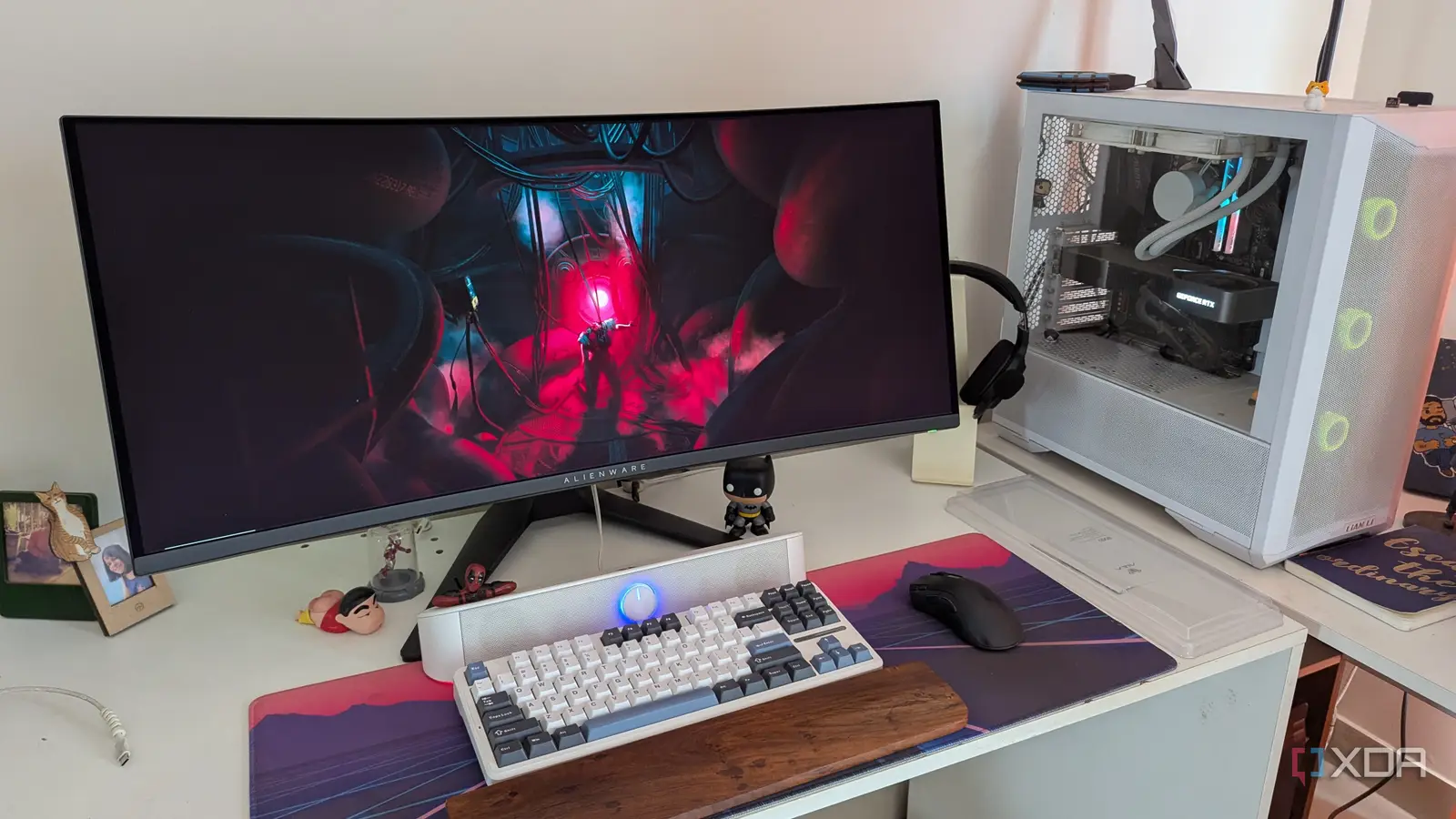
Many gamers swear by GPU undervolting to the extent that it’s the first thing they do on each new GPU. Personally, I’ve dabbled in undervolting, both on the CPU and GPU front, but never stuck to it due to the minor FPS drop (I wasn’t lucky enough to get increased performance). Recently, however, I was forced to undervolt my graphics card due to my new OLED monitor pushing the overall power consumption past the capabilities of my UPS — I just couldn’t bear the constant beeping.
My new OLED monitor was the last straw
The UPS couldn’t take it anymore (and neither could I)
I’ve been using an 1100VA UPS for the last five years, and it has served me well for the most part. When I got my existing PC three years ago, the overall power consumption naturally shot up, but it was still within the parameters of the UPS (on most occasions). When playing demanding games, however, the UPS would sometimes start beeping incessantly, indicating that the total load was exceeding its capabilities, and that it wouldn’t be able to keep the PC on if the power went out.
The most annoying part of the whole thing was, however, that the beeping never stopped until I quit the game or moved to a less demanding environment. I found no way to disable the beeping, so I gave up and decided I’d bear the occasional annoyance, but that became impossible when I switched to an OLED monitor two weeks ago. What used to trouble me only rarely became a common occurrence — the UPS started beeping in nearly every game I played.
The new batteries inside my UPS were only a few months old, so my only options were to buy a larger UPS or somehow bring down the power consumption of the PC. I wasn’t going to move back to my IPS monitor, so my only option was to undervolt my GPU in an attempt to bring the total load down to the UPS’ level.
Undervolting my GPU fixed the annoying UPS beeps
Without losing any performance
Undervolting the GPU was the simplest solution, since it was the biggest contributor to the system load, and undervolting it would be relatively simple. I launched MSI Afterburner and opened the Curve Editor to select a lower voltage without a major hit to the clock speed. After a few attempts, I found a stable voltage that delivered almost the same performance as the stock settings. The FPS was slightly lower, but I got rid of the beeping from the UPS.
In the past, I had skipped GPU undervolting because I didn’t care about lower temps or power draw, and wanted the maximum performance. Now, however, a single-digit FPS difference doesn’t bother me as much as the loud UPS beeps. The actual difference to my gaming experience is negligible, and I’ve managed to reduce the power draw and thermals as a bonus.
I might still buy a larger UPS
For the eventual GPU upgrade
Limiting the power consumption of my PC has solved the UPS beeping problem for now, but I suspect this isn’t going to be permanent. My GPU is already two generations old, and I’ve been meaning to upgrade for a while. A powerful new GPU would again push my total system power draw to new heights, and my UPS might not be able to stay quiet under those conditions, even with a GPU undervolt.
I believe a 1500VA UPS would be enough to accommodate a future GPU upgrade, although a 2000VA unit would be a better pick to really future-proof the setup. I would probably build an AM5 PC in 2027, and a sufficiently large UPS would be able to handle anything the new build throws at it. For now, however, undervolting my GPU saved me the cost of a new UPS, and I can enjoy my favorite titles on my new monitor without covering my ears.
Undervolting your GPU is worth it for everyone
Even if you’re not concerned about your PC’s power draw, or facing a weird problem like I did, undervolting your GPU is worth a try. You might even see a jump in performance due to the increased thermal headroom. If not, the reduced temperatures and power draw would extend the life of your graphics card. If the drop in performance is negligible, GPU undervolting becomes a no-brainer.



